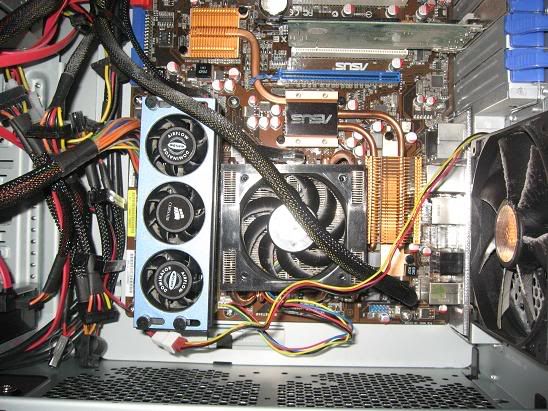I would consider myself to be above average in terms of general computer knowledge, but nowhere near the level of most of you guys on this forum, so I'm here because I'm admittedly in over my head.
I'm totally new to the world of over-clocking (just started researching and making attempts about 4 hours ago). My system specs are in my sig.
I'm trying to grasp the basics here, but it seems like I am missing something.
It all started when I was trying to get my RAM up to the tested speeds. Delivered at 5-5-5-18-2T 800MHz - I was aiming for their tested/accepted numbers of 5-5-5-15-2T 1066MHz.
I noticed that when I changed my ram to these timings, then ran a scan with CPU-Z, that my ram was actually running slower (267.7MHz, with a FSB: DRAM of 4:3) - as opposed to the 400HMz and 1:2 that I had at default.
So I started reading up on all of this, and how the FSB has to be higher in order to get the ram's frequency up higher. I found a chart laying it out, and it said that in order to get a DDR-533 (which would double to my desired 1066) with a 1:1 ratio (I understand that 1:1 is preferable if at all possible) - I would need to be running the FSB at 266 (Default is 200 for me).
So I was thinking, what the heck, I can up the FSB for the ram timings, and tinker with the processor a bit while I am at it.
I experimented with ASUS's AI Overclocking utility, just to get a better handle on how exactly everything functions. I tested it our at 15% with an acceptable processor result (upped me to 2.99GHz) - and that set the FSB to 230 as well (multiplier for the processor was 13 I believe). And that made the CPU's voltage 1.3125. I tried a 20% system-wide with the AI Overclocker after that, and was unable to POST.
At that point, I went into manual mode, and started tinkering. I've been unable to POST with a 266FSB.
Can anyone toss me a bone here?
1) Is 266FSB the correct number for what I am looking to do?
2) Are the numbers I am looking for with the FSB: DRAM possible with my setup? From what I could gather from the article, it should be.
3) What am I missing when I clock up from 230FSB to 266FSB that is preventing me from clearing a POST?
Any info would be greatly appreciated. Thanks guys!
I'm totally new to the world of over-clocking (just started researching and making attempts about 4 hours ago). My system specs are in my sig.
I'm trying to grasp the basics here, but it seems like I am missing something.
It all started when I was trying to get my RAM up to the tested speeds. Delivered at 5-5-5-18-2T 800MHz - I was aiming for their tested/accepted numbers of 5-5-5-15-2T 1066MHz.
I noticed that when I changed my ram to these timings, then ran a scan with CPU-Z, that my ram was actually running slower (267.7MHz, with a FSB: DRAM of 4:3) - as opposed to the 400HMz and 1:2 that I had at default.
So I started reading up on all of this, and how the FSB has to be higher in order to get the ram's frequency up higher. I found a chart laying it out, and it said that in order to get a DDR-533 (which would double to my desired 1066) with a 1:1 ratio (I understand that 1:1 is preferable if at all possible) - I would need to be running the FSB at 266 (Default is 200 for me).
So I was thinking, what the heck, I can up the FSB for the ram timings, and tinker with the processor a bit while I am at it.
I experimented with ASUS's AI Overclocking utility, just to get a better handle on how exactly everything functions. I tested it our at 15% with an acceptable processor result (upped me to 2.99GHz) - and that set the FSB to 230 as well (multiplier for the processor was 13 I believe). And that made the CPU's voltage 1.3125. I tried a 20% system-wide with the AI Overclocker after that, and was unable to POST.
At that point, I went into manual mode, and started tinkering. I've been unable to POST with a 266FSB.
Can anyone toss me a bone here?
1) Is 266FSB the correct number for what I am looking to do?
2) Are the numbers I am looking for with the FSB: DRAM possible with my setup? From what I could gather from the article, it should be.
3) What am I missing when I clock up from 230FSB to 266FSB that is preventing me from clearing a POST?
Any info would be greatly appreciated. Thanks guys!
![[H]ard|Forum](/styles/hardforum/xenforo/logo_dark.png)

